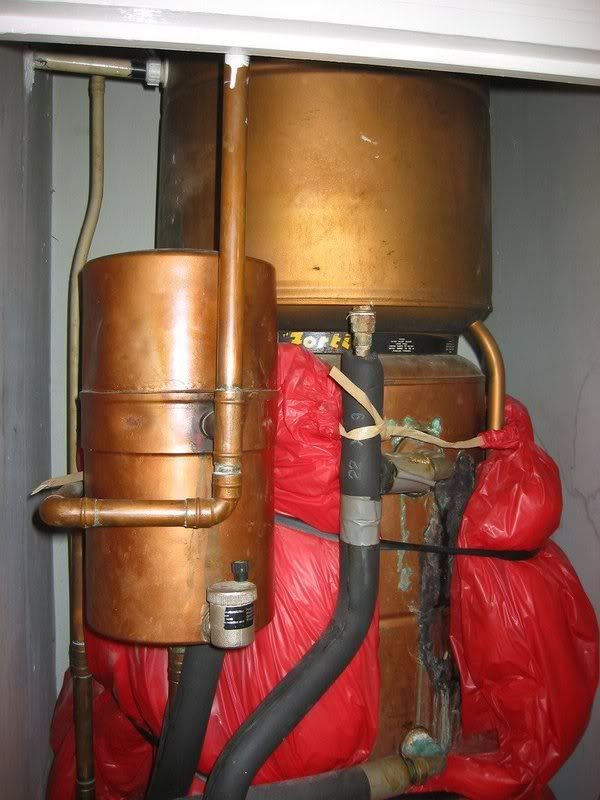Hi
I have recently moved house and have come across this in the airing cupboard!
www.diynot.com/network/pjs2388/albums/
Can anybody identify it for me?!!
It is a small copper cylinder which is fixed to the wall above the hot water cylinder.
It has three copper pipes connected to it:
The one on the right is connected to the top of the hot water cylinder (hot water?).
The one on the left comes down from the loft, so I believe it is connected to the cold water storage tank.
The one out of the bottom of the cylinder connects into the pipework just above the central heating pump.
There is also a manual vent on the side of this cylinder.
Thanks for any information.
[/url]
I have recently moved house and have come across this in the airing cupboard!
www.diynot.com/network/pjs2388/albums/
Can anybody identify it for me?!!
It is a small copper cylinder which is fixed to the wall above the hot water cylinder.
It has three copper pipes connected to it:
The one on the right is connected to the top of the hot water cylinder (hot water?).
The one on the left comes down from the loft, so I believe it is connected to the cold water storage tank.
The one out of the bottom of the cylinder connects into the pipework just above the central heating pump.
There is also a manual vent on the side of this cylinder.
Thanks for any information.
[/url]


